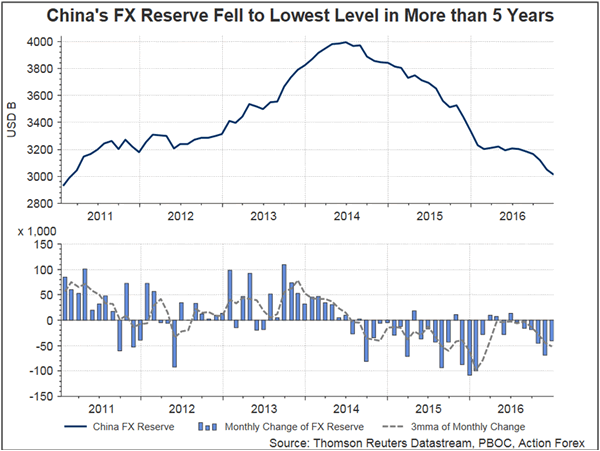Chinese GDP expanded +6.7% in 2016, grabbing the mid-point of government’s target of 6.5-7%. Growth is expected to decelerate further, probably reaching +6.5% this year. At the Central Economic Work Conference held last December, top leaders of the Chinese Communist Party indicated the policy would focus on controlling credit and housing risks, compared with stimulating growth in the past year. Yet, growth is still an issue concerning the government, with achieving growth targets a critical factor to ensure smooth leadership transition in late 2017. Meanwhile, renminbi should depreciate further. Besides the broadly-based strength in US dollar, concerns over further renminbi depreciation would continue to lead to huge capital outflow, a behavior that aggravate renminbi’s weakness. We expect USDCNY to rise above 7 in 2Q17.

At the last macroeconomic report for 2016, the National Bureau of Statistics reveals that China’s GDP expanded +6.8% y/y in 4Q17, up from +6.7% in the prior quarter. Growth in 2016 moderated to +6.7% in 2016, down from +6.9% in 2015 and marking the slowest pace in 26 years. Industrial production grew +6% y/y in December, down from +6.2% in November. Over the full year of 2016, industrial production expanded 6%. Retail sales expanded +10.9% y/y, beating consensus of +10.7% and November’s +10.8%. Urban fixed asset investment increased +8.1% for the full year 2016, slowing from +8.3% in the first 11 months of the year. Overcapacity in heavy industries will drag on China’s investment activity in 2017.

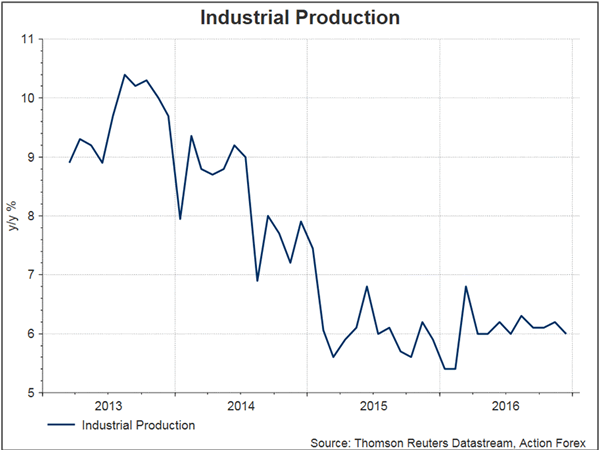

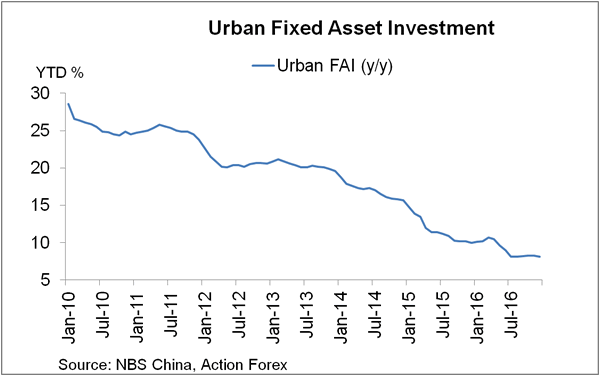
We expect growth to moderate further this year. Nonetheless, the focus of the government has been shifted to stability, with emphasis put on the management of credit and housing risks. As suggested in the statement accompanying the Central Economic Work Conference held in December, the goal in 2017 is to maintain overall social and economic stability for the upcoming 19th Communist Party Congress, which is scheduled in late 2017, through controlling financial risks and protection of property rights. As growth takes a backseat in the economic plan, and given the fact that economic growth has stabilized last year, the government has delivered a less dovish message on the monetary policy. Such stance is also accompanied with a more flexible growth target. Advisers familiar with the authority signal that the government will target around +6.5% of growth this year, compared with 6.5-7% in 2016.
Renminbi fell against the US dollar for three years in a row. The offshore USDCNY soared +6.95% in 2016, following gains of +2.49% and +4.63% in 2014 and 2015, respectively. Undoubtedly, part of the renminbi’s weakness against the greenback was driven by USD’s broad-based strength. Yet, massive capital outflow amidst concerns over further renminbi depreciation has also played a critical role in the currency’s weakness. We expect both factors to continue to weigh on renminbi in 2017.
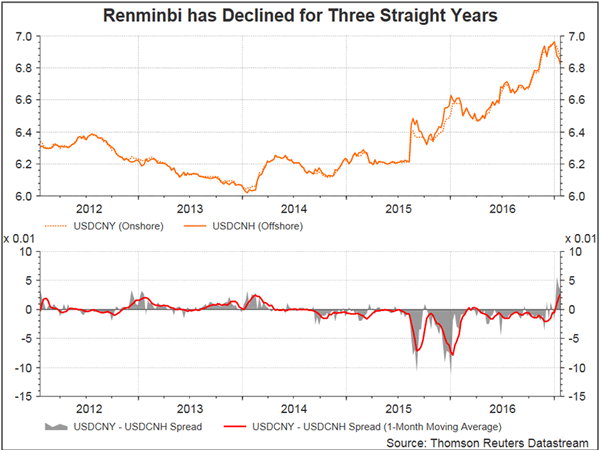
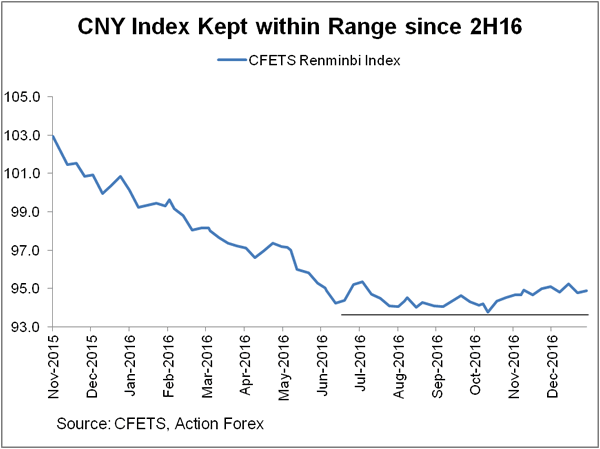
China’s FX reserve fell -US$41.08B in December, after plunging -US$ 69.57B in the prior month. While at a slower pace, it is estimated that over 60% of the decline last month was due to capital outflow, compared with 50% in November. This has raised doubts over the effectiveness of the restrictive measures, including guidance for using Union Pay at overseas insurer (introduced in October), and restriction to bring renminbi overseas for the purpose of converting into foreign currencies (introduced in late November), implemented so far. Early January, SAFE stepped up the restrictions by imposing new administrative requirement for personal foreign currency purchase in China. For the year ahead, the government remains under pressure to intervene the market to curb renminbi depreciation.
We see several reasons for renminbi to go further lower this year. Despite the retreat since the beginning of the year, we remain constructive over USD this year on anticipation that Donald Trump’s pro-growth policy would drive higher economic expansion and inflation, and facilitate a tighter monetary policy stance. Indeed, USDCNY jumped +2.5% after US presidential election, contributing almost 40% to 2016’s gain. The “new” US-China trade relations might also weigh on renminbi. Trump indicated during his election campaign that he might impose a 45% tariff on Chinese exports to the US. Uncertainty in the trade policy has raised concerns over China’s economic growth outlook which has been anticipated to slow further this year. Meanwhile, the Chinese government is tempted to allow renminbi to weaken further to stimulate exports.
